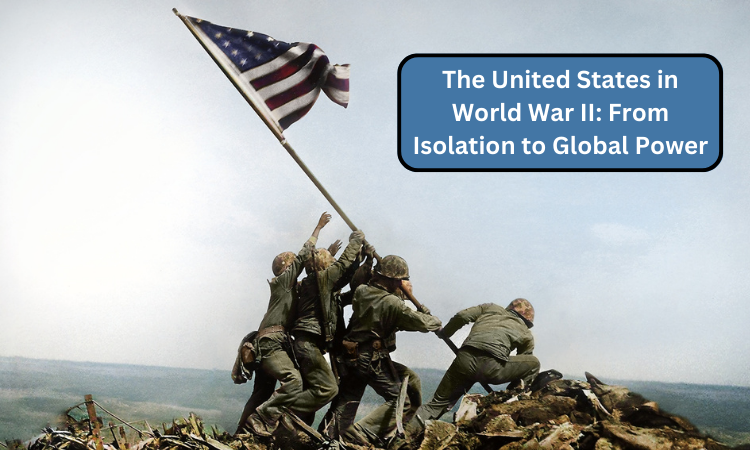
The Second World War was the most significant conflict of the 20th century, and the United States played a crucial role in determining its outcome. From an initial stance of neutrality to becoming a pivotal force in the war’s conclusion, the US evolved from an isolated nation to a pre-eminent global superpower.
The years following World War I saw the United States adopt a policy of isolationism. The trauma of the First World War, the disillusionment of the Treaty of Versailles, and the economic hardship of the Great Depression made Americans wary of external engagements. The Neutrality Acts of the 1930s prohibited arms trade and loans to nations at war, aiming to prevent the US from being drawn into foreign conflicts.
However, as Axis powers – Germany, Italy, and Japan – began their aggressive expansions, the US found it increasingly challenging to remain detached. Japan's surprise attack on Pearl Harbor on December 7, 1941, was the direct catalyst for US involvement. The following day, the US declared war on Japan, and three days later, Germany and Italy declared war on the US. Isolationism ended abruptly, and the US was now engaged on two major fronts.
In Europe, the initial focus was to halt the German advance. While the Soviet Union engaged the majority of German forces on the Eastern Front, the US, in conjunction with Great Britain, began strategizing a 'Europe First' approach. This alliance, solidified during meetings like the Atlantic Charter, set the stage for joint military action.
The North African Campaign and the subsequent invasions of Italy in 1943 allowed the Allies to gain a foothold in the continent. D-Day, on June 6, 1944, marked a pivotal moment. The Allied forces, under the leadership of General Dwight D. Eisenhower, stormed the beaches of Normandy, marking the beginning of the end for Hitler's Fortress Europe. The relentless push of Allied forces from the west, coupled with the Soviet advances from the east, led to Germany’s unconditional surrender on May 7, 1945.
The conflict with Japan was marked by island-hopping campaigns, naval battles, and intense air warfare. Key battles included Midway in 1942, where the US Navy dealt a crippling blow to the Japanese fleet, and Guadalcanal, where ground forces captured a strategic airfield.
By 1945, the US had pushed Japan back to its home islands. The Battle of Iwo Jima and the invasion of Okinawa brought the war to Japan’s doorstep, but at a high cost. With concerns about a costly invasion of the Japanese mainland and to hasten the war’s end, President Harry Truman approved the use of the atomic bomb. Hiroshima and Nagasaki were bombed in August 1945, leading to Japan's surrender.
The war effort led to significant changes domestically. The US underwent rapid industrialization, with factories transitioning to produce war-related goods, leading to the moniker "Arsenal of Democracy." The economy rebounded from the Depression, and unemployment plummeted. Women entered the workforce in unprecedented numbers, symbolized by the iconic "Rosie the Riveter."
However, the war also highlighted and exacerbated societal inequalities. While African Americans, Hispanics, and other minority groups served valiantly in the war, they often faced segregation and discrimination at home and in the armed forces. The internment of Japanese Americans, due to wartime paranoia, remains a dark chapter in US history.
The war’s conclusion saw the US emerge as one of the two superpowers, the other being the Soviet Union. The United States played a crucial role in post-war reconstruction efforts, with the Marshall Plan aiding Western Europe’s recovery. The formation of the United Nations, with the US as one of its primary architects, aimed to foster global peace and cooperation.
However, the ideological differences between the US and the Soviet Union set the stage for the Cold War, a decades-long period of geopolitical tension and rivalry.
Final Word
The US's role in World War II was transformative. From a nation committed to non-involvement, it became an indispensable force in the defeat of Axis powers. The war catalyzed significant socio-economic and political changes, both domestically and internationally. The United States, by the war's end, stood not as an isolated nation, but as a global leader, setting the stage for its dominant role in the latter half of the 20th century.